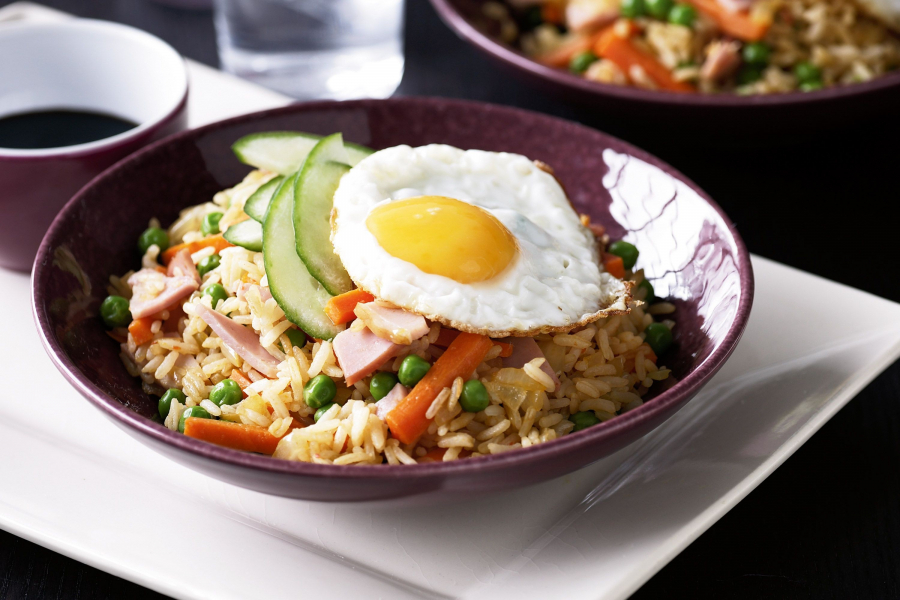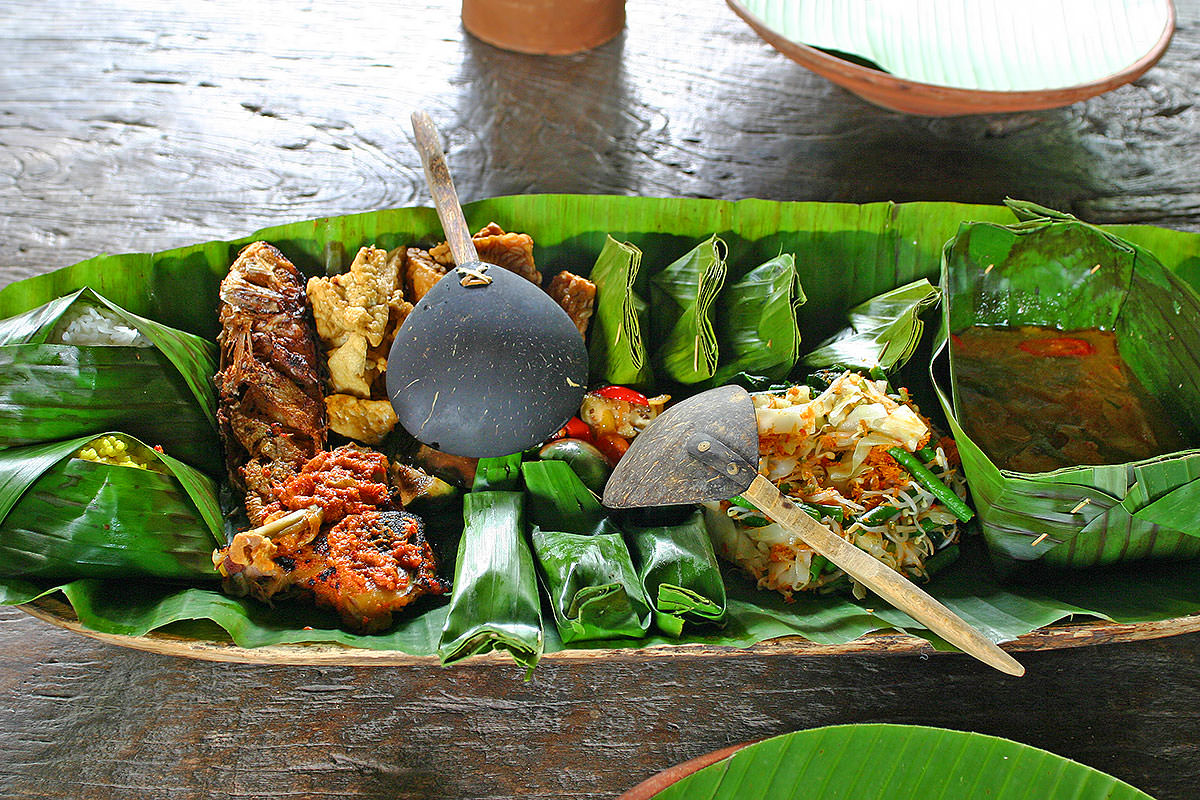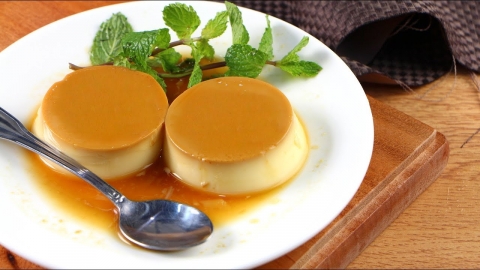The Indonesian government and the National Tourism Ministry have just launched a new tourism development strategy: “Bringing Indonesian cuisine to the world”. This is an action program with the goal of promoting tourism, attracting 20 million international tourists to this “thousand-island” country in 2019.
Accordingly, the Indonesian Ministry of Tourism will coordinate with more than 100 Indonesian restaurants around the world to create a menu of the most typical dishes of this island nation, with the quintessence of processing and ingredients to introduce to international friends. Indonesian Tourism Minister Arief Yahya hopes that in the future, Indonesian cuisine will become a "formidable" rival of Thai cuisine.
Let's take a look at some of the characteristics of Indonesian cuisine to see why Indonesia chose cuisine as the focus of this communication strategy.
The mark of spices

Indeed, the diversity is not only in the way of preparing food but also in the way of enjoying Indonesian food. Spices are one of the most important elements in food preparation. In Indonesia, spices can even contribute to creating new dishes with unique flavors. Besides typical spices such as cloves, nutmeg, peanut oil, etc., Indonesian people also like to use spices made from fresh herbs such as basil, lemongrass, etc.
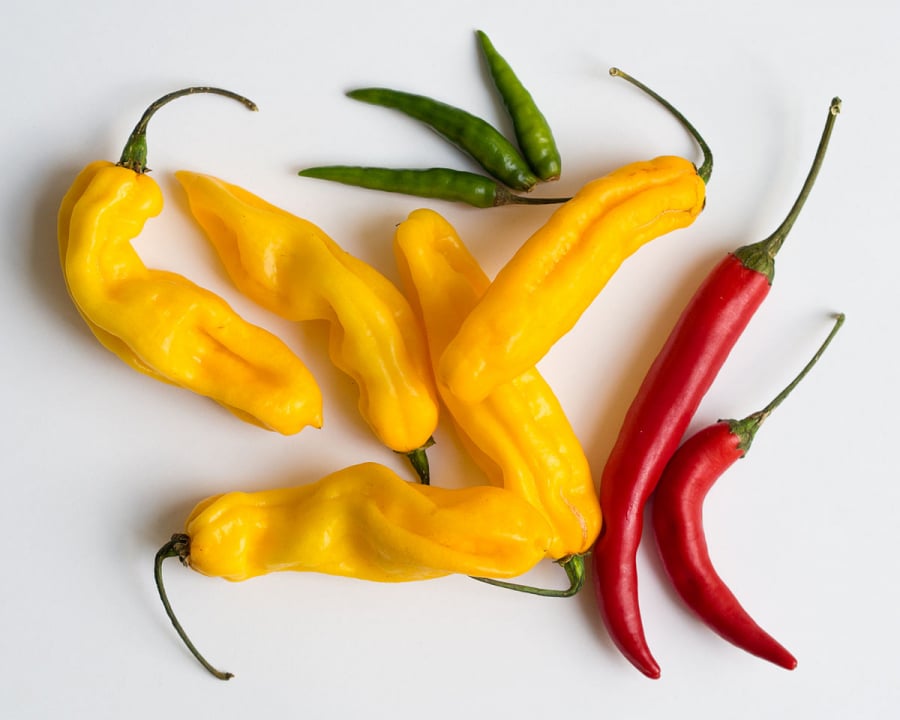
Chili and red pepper are the main spices, present in all dishes, so Indonesian dishes have a burning hot taste. This is the spicy taste of chili, not the hot spicy taste of pepper like in Indian dishes.
Usually, dishes are served with sambal - a sauce made from fresh chili, salty taste - used like soy sauce or fish sauce in Vietnam to make the dish more flavorful. There are many different ways to make sambal sauce because in Indonesian families, when girls grow up, their mothers always teach them how to make sambal according to their family's own tradition.
How to enjoy food with passion

Indonesians have a habit of eating with their hands, so food is cut into bite-sized pieces to make it easier for people to enjoy. Spoons and forks are also commonly used in this country.
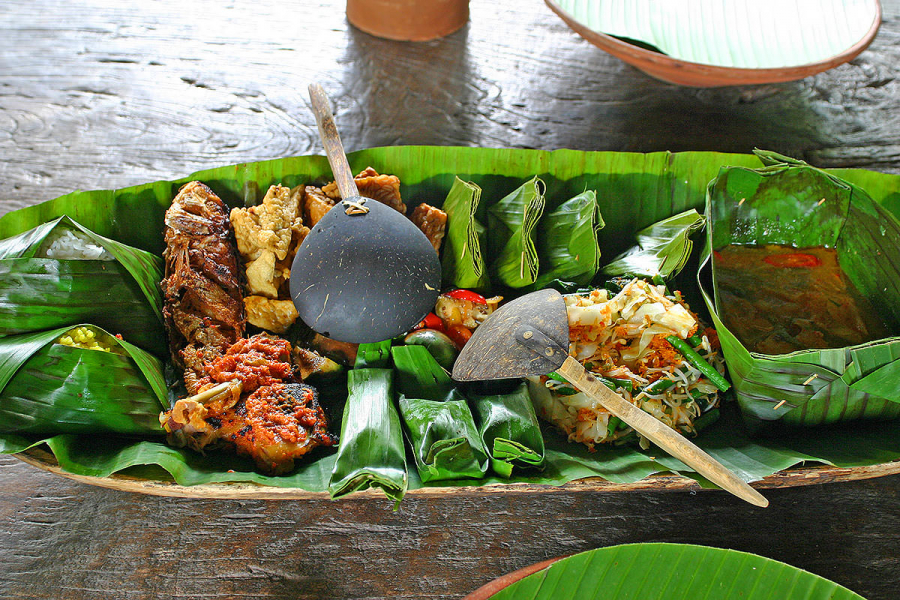
When preparing meals for guests, Indonesians prepare dishes in a very special way, the food is displayed on a large tray placed in the middle of the house. According to custom, if invited to a meal like that, guests should not eat everything but should leave a little of each dish to show that they are very full and the meal is extremely delicious.
Indonesian specialties
RendangRendang is a dish originating from the Minangkabau ethnic groups of Indonesia. Rendang is sometimes described as curry-like. But in truth, rendang is nothing like curry.
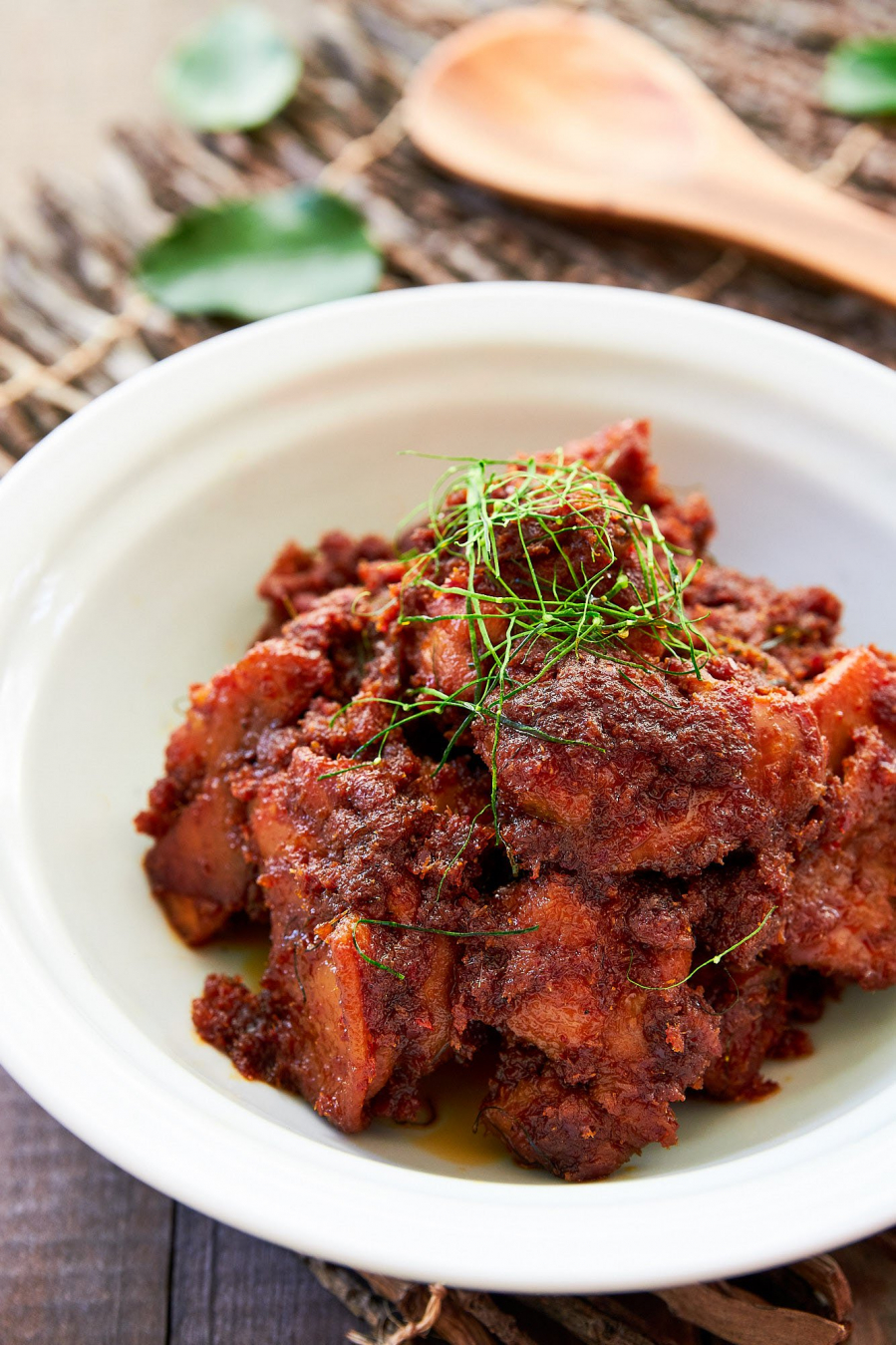
Rendang is typically made from beef slowly cooked in coconut milk and spices for several hours until everything is tender and the right consistency is achieved. Spices may include ginger, onions, galangal, turmeric leaves, lemongrass and chili.
Nowadays, rendang has undergone a transformation, with chicken or duck being used instead of beef.
Satayis a dish that tourists can find anywhere in Indonesia. The meat used in this dish is usually beef or chicken. The meat is marinated with spices such as lemongrass, galangal, salt, sugar, etc. and then grilled over hot coals.
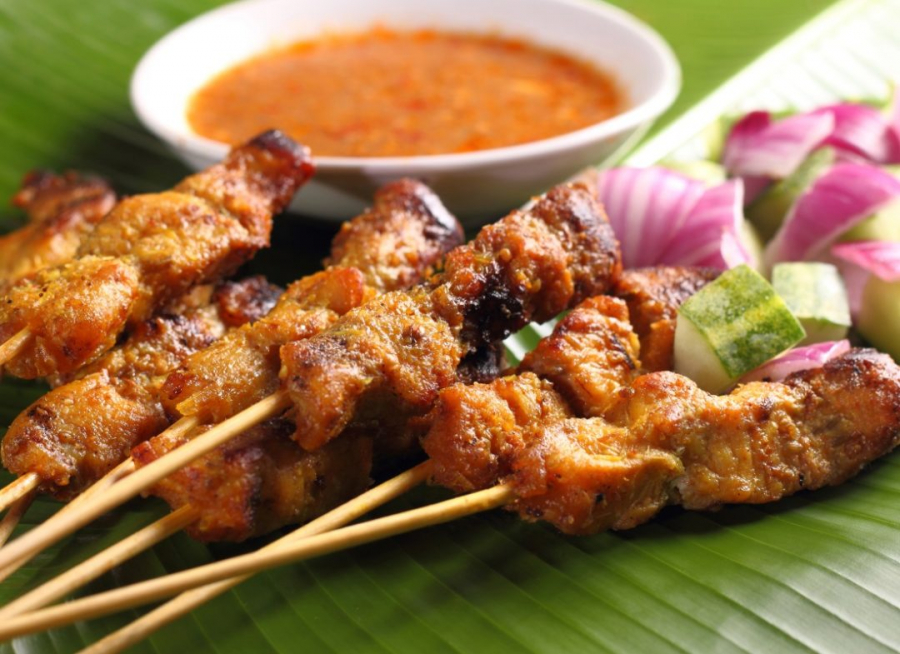
Satay skewers are golden brown when grilled, the meat has a fragrant, fatty shine. Satay skewers are served with cubed onions and cucumbers. Satay skewers are not complete without peanut dipping sauce.
Sasi gudegis a specialty of the Yogja region of Indonesia. Sasi gudeg is similar to the braised jackfruit dish in Vietnam but is prepared more elaborately. Young jackfruit is shredded and stewed with chicken, thinly grated coconut, eggs, tofu and many other vegetables. Sasi gudeg has the full sweetness of the meat, the fat of the coconut, a little creaminess from the young jackfruit seeds and the indispensable spiciness of the Java chili pepper spreading in the mouth.
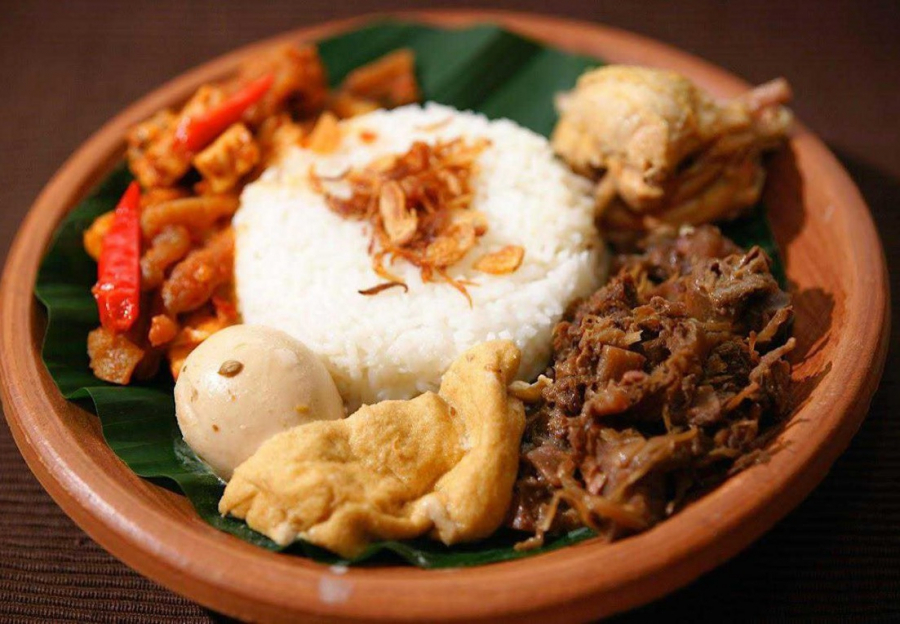
Javanese fried noodlesis a favorite dish of Indonesian people. Ordinary people can choose noodles that are easy to eat and suit their taste. Meanwhile, high-class restaurants will serve special fried noodles.
In general, the noodles are made from grains grown in Indonesia such as rice, glutinous rice, green beans, soybeans, etc. The noodles are soft and chewy, absorbing the flavor of stir-fried spices and typical vegetables. When eating fried noodles, visitors should eat them with the dipping sauce prepared by the restaurant, so as to fully enjoy the essence of the dish.
Soto Souphas quite typical ingredients. All are crushed and smooth before being cooked. Soto soup cannot lack typical ingredients such as corn oil, chicken or beef. In particular, Soto wings also have the flavor of soy sauce. Soto is a hot soup, often found in Indonesian family meals.
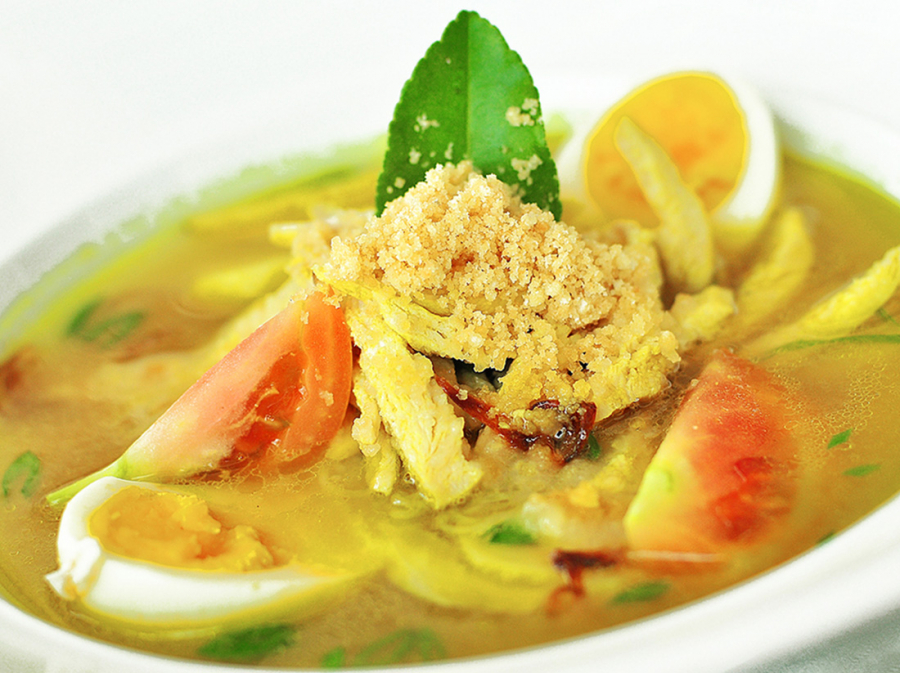
Babi Gulingis a traditional Balinese dish. The dish is made from roasted suckling pig and rice, marinated with a mixture of chopped spices including onion, garlic, ginger, turmeric, pepper, herbs, galangal, chili, lemongrass… before being roasted over a large fire for 5 hours. The suckling pig is continuously slow-roasted to ensure the meat is tender and delicious.
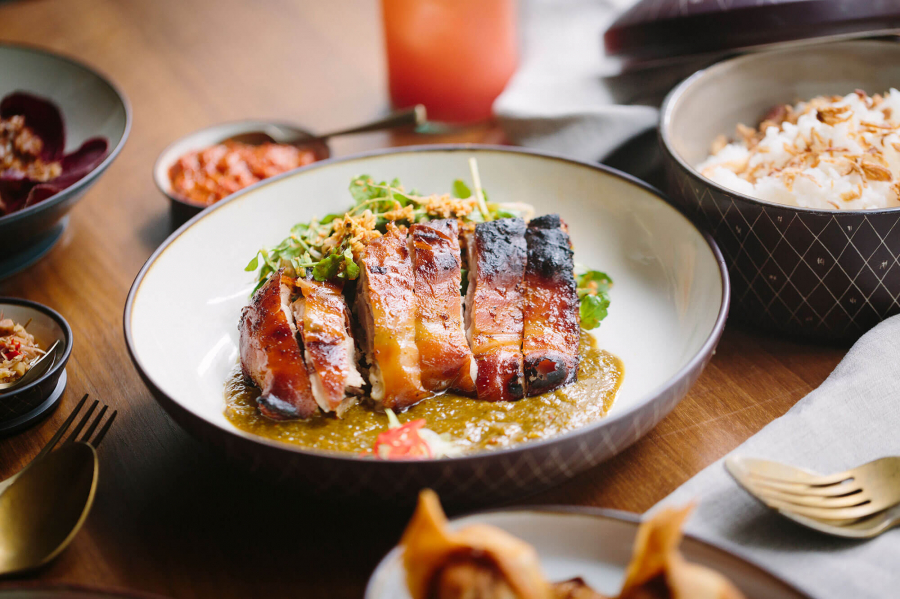
Sate LitetSate Lilit is a dish quite similar to Vietnamese spring rolls, however, it has many differences in the way of choosing ingredients and processing.
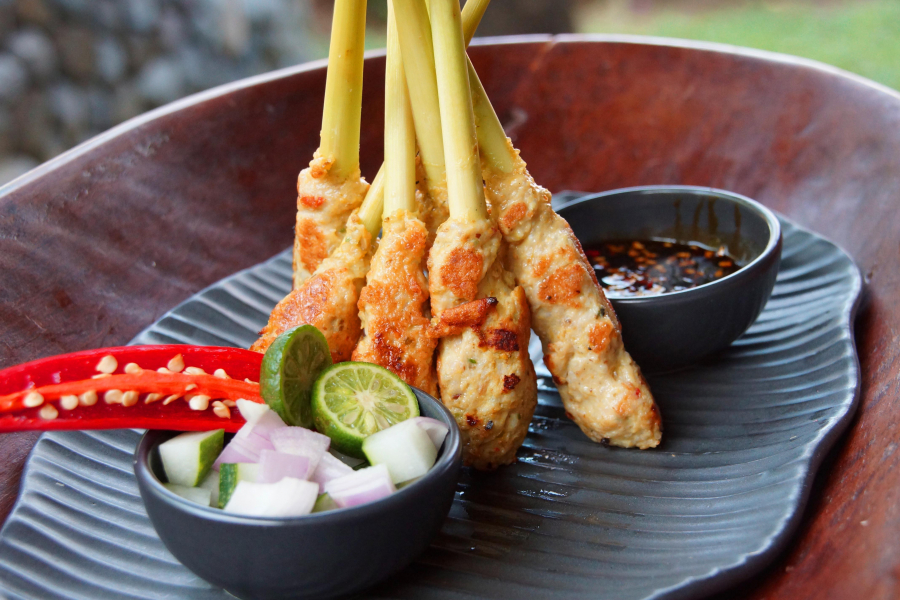
The fish and shrimp, peeled and deboned, are ground and marinated with spices such as salt, chili, herbs, coconut milk, then wrapped in lemongrass stalks and grilled. People in Indonesia do not use charcoal to grill the skewers but use coconut husks. Perhaps that is why Sate Lilit has such a unique flavor that cannot be found anywhere else.
Nasi Goreng Fried Ricewas rated by CNN International as the second dish in the list of “50 delicious dishes of the world”. Therefore, the first dish that you cannot miss when learning about Indonesian cuisine is Nasi goreng fried rice. Unlike other fried rice dishes in the world, Nasi goreng fried rice is prepared with a combination of many spices, sauces including tamarind, chili, eggs and shrimp, bringing an attractive spicy flavor.
